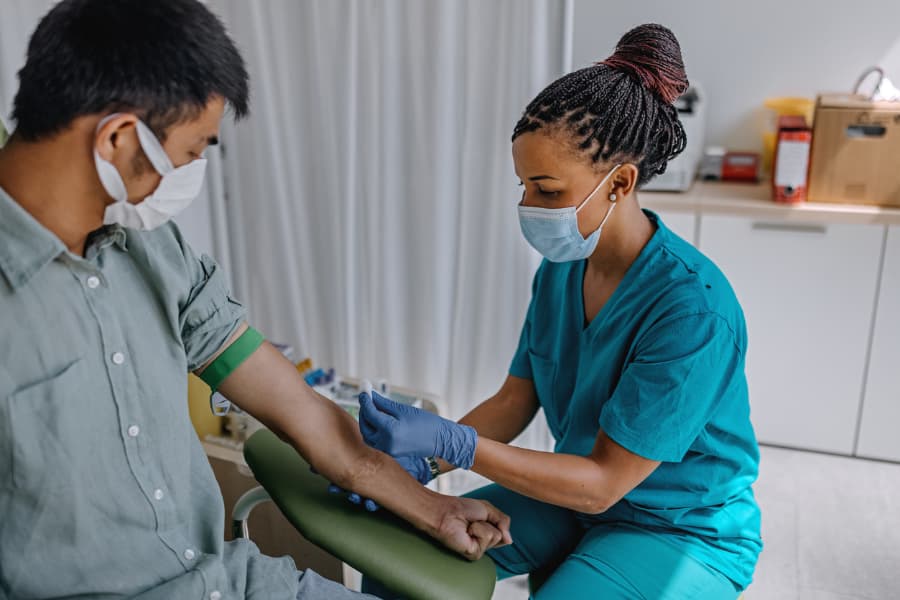Northeast Medical Institute - New Haven Campus Phlebotomy Course & Cna Class - The Facts
Northeast Medical Institute - New Haven Campus Phlebotomy Course & Cna Class - The Facts
Blog Article
The Greatest Guide To Northeast Medical Institute - New Haven Campus Phlebotomy Course & Cna Class
Table of ContentsNot known Factual Statements About Northeast Medical Institute - New Haven Campus Phlebotomy Course & Cna Class The 3-Minute Rule for Northeast Medical Institute - New Haven Campus Phlebotomy Course & Cna ClassNot known Details About Northeast Medical Institute - New Haven Campus Phlebotomy Course & Cna Class Northeast Medical Institute - New Haven Campus Phlebotomy Course & Cna Class - An OverviewGetting The Northeast Medical Institute - New Haven Campus Phlebotomy Course & Cna Class To WorkGetting My Northeast Medical Institute - New Haven Campus Phlebotomy Course & Cna Class To Work
The use of such tools ought to be gone along with by various other infection prevention and control techniques, and training in their usage.For settings with reduced resources, price is a motoring consider procurement of safety-engineered tools - Phlebotomy Training. Where safety-engineered tools are not available, skilled use a needle and syringe serves. Unexpected direct exposure and specific info concerning an incident must be tape-recorded in a register. Assistance solutions ought to be promoted for those who undergo unintentional exposure.
Among the necessary markers of quality of care in phlebotomy is the involvement and teamwork of the individual; this is mutually beneficial to both the health worker and the client. Clear details either composed or verbal need to be available to every patient that undergoes phlebotomy. Annex F offers sample message for clarifying the blood-sampling treatment to a patient. In the blood-sampling area for an outpatient division or facility, give a comfortable reclining couch with an arm rest.
A Biased View of Northeast Medical Institute - New Haven Campus Phlebotomy Course & Cna Class
Make sure that the indicators for blood tasting are clearly specified, either in a written method or in documented guidelines (e.g. in a research laboratory form). At all times, adhere to the strategies for infection avoidance and control noted in Table 2.2. Infection avoidance and control methods. Accumulate all the equipment needed for the procedure and area it within secure and simple reach on a tray or trolley, ensuring that all the things are clearly visible.
Present yourself to the person, and ask the person to mention their full name. Check that the research laboratory form matches the patient's identity (i.e. match the patient's information with the research laboratory type, to ensure accurate identification).
Make the patient comfy in a supine position (if possible). The individual has a right to refuse an examination at any type of time before the blood tasting, so it is vital to ensure that the patient has understood the procedure - PCT Classes.
Northeast Medical Institute - New Haven Campus Phlebotomy Course & Cna Class Fundamentals Explained
Extend the patient's arm and check the antecubital fossa or lower arm. Situate a capillary of an excellent dimension that is visible, straight and clear. The representation in Area 2.3, reveals usual placements of the vessels, but many variations are possible. The average cubital capillary exists in between muscle mass and is normally the most very easy to penetrate.
DO NOT insert the needle where blood vessels are drawing away, because this increases the opportunity of a haematoma. Locating the capillary will assist in identifying the right size of needle.
Haemolysis, contamination and presence of intravenous liquid and medication can all change the outcomes (39. Nursing team and medical professionals may access main venous lines for specimens adhering to procedures. Samplings from central lines bring a danger of contamination or wrong research laboratory examination outcomes. It is acceptable, however not perfect, to injure samplings when very first presenting an in-dwelling venous gadget, before connecting the cannula to the intravenous liquids.
4 Simple Techniques For Northeast Medical Institute - New Haven Campus Phlebotomy Course & Cna Class
Allow the location to dry. Failure to allow sufficient get in touch with time boosts the risk of contamination. DO NOT touch the cleaned website; in certain, DO NOT put a finger over the vein to assist the shaft of the revealed needle. It the website is touched, repeat the disinfection. Carry out venepuncture as complies with.
Ask the client to create a fist so the capillaries are a lot more popular. Enter the capillary quickly at a 30 degree angle or much less, and remain to present the needle along the find more info blood vessel at the most convenient angle of entrance - CNA Classes. Once adequate blood has actually been accumulated, launch the tourniquet prior to withdrawing the needle
A Biased View of Northeast Medical Institute - New Haven Campus Phlebotomy Course & Cna Class
Withdraw the needle gently and apply gentle stress to the site with a clean gauze or dry cotton-wool ball. Ask the client to hold the gauze or cotton woollen in position, with the arm prolonged and increased. Ask the individual NOT to bend the arm, because doing so causes a haematoma.

An Unbiased View of Northeast Medical Institute - New Haven Campus Phlebotomy Course & Cna Class
Where feasible, maintain the tubes in a rack and relocate the shelf towards you - https://telegra.ph/Northeast-Medical-Institute-New-Haven-Campus-Phlebotomy-Course--CNA-Class-06-29. If the example tube does not have a rubber stopper, inject very gradually right into the tube as lessening the stress and velocity made use of to transfer the specimen minimizes the threat of haemolysis.

Report this page